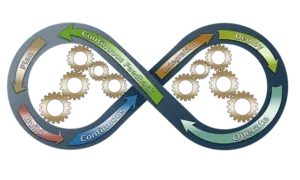The importance of micro-interactions with users should be emphasized as much as possible. This crucial step in communicating with your clients is extremely important. However, as it happens on the micro-level, it usually goes unnoticed by someone who is not tech-savvy. To be able to explain how important micro-interactions really are, I will spend a couple of minutes first talking about what micro-interactions are.
What is a micro-interaction?
Micro-interactions surround us in our daily lives. Whenever you are using an app, mobile or desktop-oriented, or even an appliance in your home, you are engaging with a micro-interaction. They are present in our work environment as well.
To put it simply, a micro-interaction is a product-moment that revolves around a single use. For example, setting a password, syncing time on your PC, or setting the alarm to ring. These single-use moments have just that one task to accomplish.
The main uses of micro-interactions
Now that you know what micro-interactions are, you should be able to understand their importance in communicating with clients. Some of the main uses of micro-interactions are:
- to change a setting
- connect two or more devices
- control an ongoing process (sound volume, fullscreen, etc.)
- turn a function or a feature on or off
- interact with a single piece of data (getting the time zone, for example)
- creating or viewing a piece of content (a post or a message on any platform)

Sounds familiar? As you can see, we are all using micro-interactions in our daily lives. We just don’t realize it, because we are not aware of that concept.
Implementing micro-interactions in your business
Understanding of micro-interactions with users will help you to successfully implement them in your business. They are a great tool for advertisements, successful e-mail campaigns, or any other instance of marketing.
By implementing micro-interactions, you are able to get specific feedback from your customers.
Micro-interactions structure
The secret of the importance of micro-interactions with users lies in its structure. Once you are able to understand the flow of a micro-interaction, you will know how to build it. Furthermore, you’ll know how to implement it in your business.
Part 1 – Trigger
A trigger is something that triggers a micro-interaction. It is an action that the user takes that initiates the whole process. Furthermore, it can be system-based, as a reaction to something the user did. Also, it can be user-based. For example, if you wish to leave a like on someone’s post, you will click the mouse on the designated Like icon.
Part 2 – Rules
Rules are what determines the result of the action. However, it is not something visible to the user. It is the actual programming code that runs as a response to the mouse-click on the Like icon.
Part 3 – Feedback
Feedback is the result that the customer sees upon completing a micro-interaction. In our example, that would be the increased number in Like count.
Part 4 – Loops and Modes
Loops and Modes are reserved for all the metadata of a micro-interaction. How micro-interaction functions under different rules, or what happens next. For example, what if a user liked a comment, and he clicks on the Like icon again.

Subtleties of micro-interactions
Another way to understand the importance of micro-interactions with users is to concentrate on all the subtleties. For example, if you visit a website, focus your attention to animation. What are the transitions when you scroll down the page? Is there an animation when you click on a button, or it just changes the page? Or, are there any animations on mouse focus or hover?
All these subtleties of micro-interactions are what make a difference between well-made websites and everything else. With that in mind, you should always request micro-interactions to be implemented on your website or an app important to your business. If you ever hear a developer or a programmer asking you if micro-interactions are really that important, do not work with them. They obviously don’t understand their importance, and how to advertise a new company.
Your clients will notice all those subtleties, and understand the time and effort that was invested in creating something visually appealing.
The importance of micro-interactions in human behavior
Although it may seem that micro-interactions are a tech-term, they were present in our lives before the techno era. They have roots deep inside human behavior. If we get back to our example with the Like button, you will understand that it is a pattern on all social networks. You see something you like, and you hit the Like button.

Patterns exist in our lives wherever you look. Furthermore, they have the strength to modify human behavior. It is known that, if a group of people acts in a certain way, an individual will pick up those behaviors and start repeating them. Psychology of patterns in human behavior is found in all spheres of our lives.
The importance of micro-interactions with users
As you can see, the importance of micro-interactions with users does not only reflect in the technical term. Moreover, it has a deeper, psychological meaning, and it affects a lot of aspects of our lives. Studying micro-interactions is the road to improving your business, strengthening the connection with your users, and providing above-expectation service and products. Furthermore, it is the way to understand and modify human nature deep within its core.






